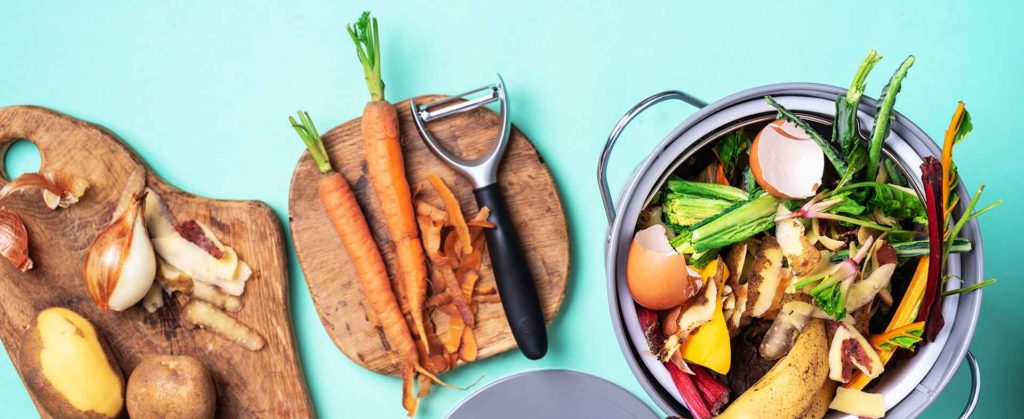
This article was provided by Henry Ford LiveWell Blog
Fruit peels, fresh herb stems and cheese rinds are parts of food you may toss into the trash. But more and more people are using these foods in recipes or adding them to a compost pile in the name of environmental sustainability.
“These efforts are called upcycling food, and yes, they can have a big impact,” says Chip Amoe, J.D., M.P.A., Director of System Sustainability at Henry Ford Health. “If each of us cut back on the food waste we send to the landfill, we’d reduce food waste, save money and cut greenhouse gas emissions that harm the environment.”
What Is Upcycling Food And Why Is It Important?
Upcycling food refers to using edible food that would otherwise have been thrown away. For example, many companies use imperfect fruits and vegetables to produce new food products like veggie chips.
Restaurants and cafeterias upcycle food by ensuring that all purchased food is used. For example, cooked carrots one day may also yield a carrot pesto made from carrot tops.
Upcycling food efforts help reduce food waste, which the U.S. Department of Agriculture estimates is nearly 30% of the food supply. Food waste also impacts our environment.
According to the Environmental Protection Agency, producing, transporting and handling food generates 170 million metric tons of carbon dioxide (CO2) emissions yearly. That’s enough CO2 to fill more than 37,000 Olympic-size swimming pools.
Once food waste reaches the landfill, it emits methane, an even more potent gas than CO2. Methane and CO2 are greenhouse gases that absorb infrared radiation from the sun, which experts say contributes to global warming and climate change.
Ways You Can Upcycle Food At Home
Upcycling food at home helps reduce overall food waste and, over time, will improve the environment significantly, Amoe says. “With a few additional steps, you can build new habits that have an impact. You’ll also have the opportunity to be more creative when planning and preparing meals.”
Start your efforts with these strategies:
- Buy locally produced foods: When you choose local products, you reduce the carbon emissions generated when food is transported long distances. Shop at your local farmers market or visit your grocery store’s “locally produced” section.
- Choose organic produce: Organic fruits and vegetables are free of pesticides and other chemicals. According to the Environmental Protection Agency, these substances may pose health risks, depending upon the chemical and level of exposure.
- Compost to nourish your garden: Explore community resources to help you start composting food waste. Set a small container with a cover under your sink to collect cut-up fruit and vegetable scraps. Transfer these to your compost bin or pile each week. The food waste breaks down over time, creating nutrient-rich soil to nourish your garden.
- Look for upcycled food products: Check out products made using edible foods that would have been thrown away. According to the Upcycled Food Association, these products use ingredients to create foods that reduce waste and positively impact the environment.
- Make a meal plan before you shop: Ensure you’re using all edible parts of your food by planning ahead. Make a weekly meal plan that uses perishable foods early in the week. Properly store fresh fruits and vegetables to prevent spoilage. Double a recipe and have leftovers for tomorrow’s lunch or freeze them for a future meal.
- Reimagine how you cook: Save herb and vegetable stems from Monday’s salad to flavor Friday’s soup. Instead of tossing citrus peels, make candied peels to garnish a dessert or create a simple syrup to flavor a drink. Use cheese rinds to flavor soups and sauces.